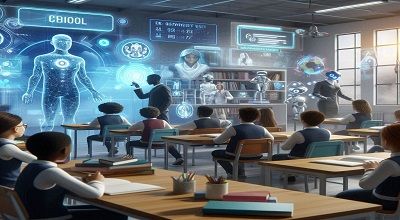Communication in Education
Effective communication plays a vital role in the education system, as it helps create a conducive learning environment, enhances collaboration, and improves overall educational outcomes. In a complex and dynamic system like schools, effective communication is necessary to meet the diverse needs of stakeholders, including students, faculty, and parents. This essay will explore the importance of communication in education and discuss key aspects of the communication system.
Importance of Communication in Education:
Communication serves as a bridge between teachers and students, enabling the exchange of information, ideas, and feedback. Clear lines of communication between teachers and students are essential for effective teaching and learning processes. Teachers should establish open channels of communication to address students’ questions, concerns, and individual needs. This fosters a supportive learning environment where students feel valued and understood.
Furthermore, effective communication between teachers and parents is crucial for student success. Regular updates on students’ progress, behavior, and academic performance help parents stay informed and involved in their child’s education. This collaboration between teachers and parents creates a strong support system that enhances students’ overall development.
Communication also plays a significant role in fostering collaboration among faculty members. Effective communication channels enable teachers to share best practices, exchange ideas, and collaborate on curriculum development. This collaborative approach promotes continuous improvement and ensures that educators are aligned in their teaching methods.
Key Aspects of the Communication System in Education:
Teacher-Student Communication: Clear and open lines of communication between teachers and students are essential for effective teaching and learning. Teachers should encourage students to ask questions, provide feedback, and express their concerns. This helps create an inclusive and engaging learning environment.
Teacher-Parent Communication: Regular communication between teachers and parents is crucial for student success. Teachers should provide updates on students’ progress, behavior, and academic performance. Parent-teacher conferences, newsletters, and online platforms can facilitate effective communication between teachers and parents.
Faculty Collaboration: Effective communication among faculty members promotes collaboration and sharing of best practices. Regular meetings, professional development workshops, and online platforms can facilitate communication and collaboration among educators.
Technology in Communication: The use of technology has revolutionized communication in education. Online platforms, email, instant messaging, and learning management systems enable quick and efficient communication between teachers, students, and parents. Technology also facilitates remote learning and virtual classrooms, allowing for continuous communication even outside traditional classroom settings.
Conclusion:
In conclusion, an effective communication system in education is essential for creating a conducive learning environment, enhancing collaboration among stakeholders, and improving overall educational outcomes. Clear lines of communication between teachers and students, teachers and parents, as well as among faculty members, are crucial for student success. Embracing technology can further enhance communication in education by providing efficient and accessible communication channels. By prioritizing effective communication, we can ensure that education remains a collaborative and inclusive process.
